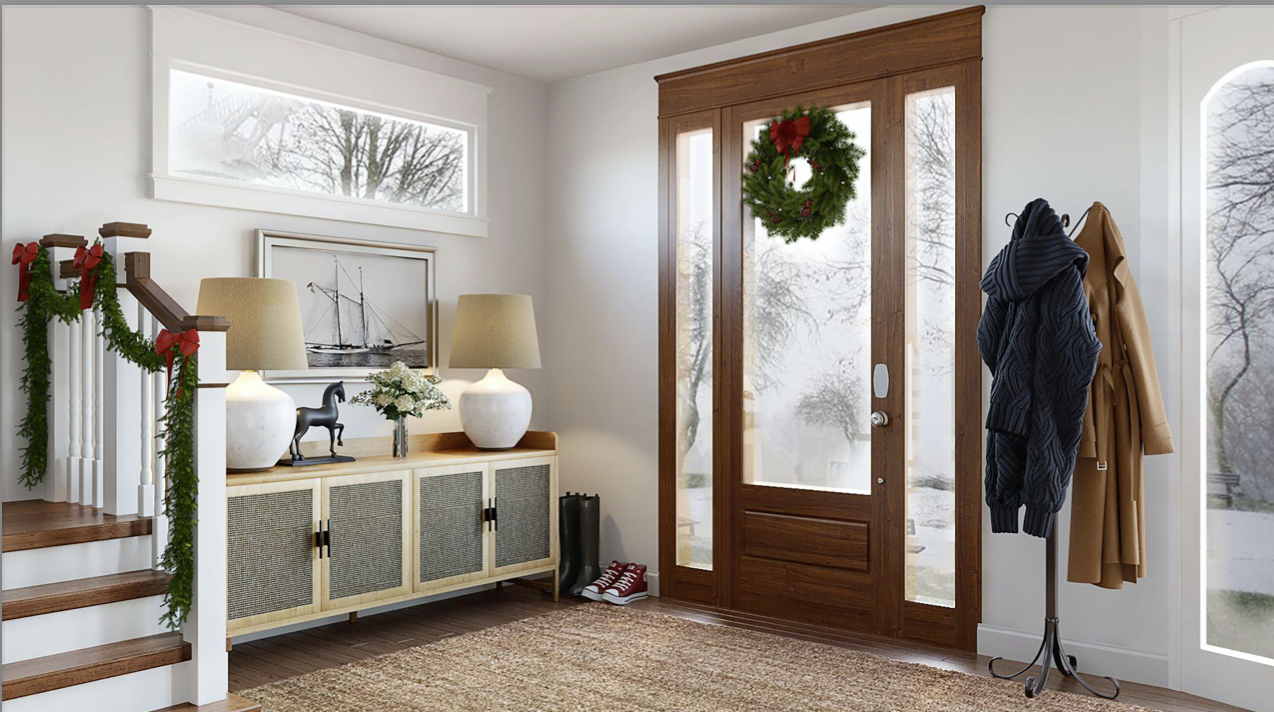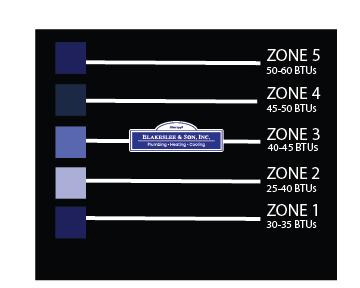How do you know where to begin when looking for a new furnace? There’s a lot to know and to look for. We’re here to help. Picking the right furnace for your home is an essential step in ensuring that come winter, your home stays warm and comfortable. The size and layout of your home, the region you live in, and your budget are all important factors in determining the right furnace for you.
Guide to Furnace Sizing
One might think that picking out a furnace is a rather simple task, unfortunately furnaces are not one-size-fits-all. Furnaces are measured in BTUs (or British thermal units), which reflect the amount of heat that a furnace can produce in an hour. The higher the BTU rating, the more warmth it can provide to your home.
But this isn’t where your calculation stops, you’ll also need to take into account:
- The layout of your home
- Your existing ductwork
- Furnace fuel sources
- Furnace efficiency
- Your budget
A furnace that is larger (has too high of a BTU rating) or smaller (has too low of a BTU rating) than needed for your home will not operate as it should and you won’t get what you paid for out of your investment.
How to Find the Right Size Furnace for Your Home
You can calculate the size of the furnace you will need using this formula:
Square footage of home x Heating factor for your climate zone = BTUs required to heat your home
Step 1 – Finding Square Footage of Home
Finding the square footage of your home should be relatively easy. You will most likely be able to find this number on your closing documents, blueprints, or somewhere on the original listing or appraisal for your home. If you cannot find this information, you can measure the square footage of each of your rooms (square footage = length of room x width of room) and add them all together to find the total square footage of your home that needs to be heated.
Step 2 – Finding your Climate Zone
The United States is broken down into five climate zones. Each of these zones requires a certain number of BTUs per square foot to heat effectively.
Find your BTU using this Climate Zone map below!

For our purposes, let’s examine the climate zone of West Michigan. Residents of West Michigan will need around 45-60 BTUs per square foot depending on location. So if your home is 2,200 square feet, you’ll need a BTU output between 99,000 to 132,000 to heat the whole space.
This calculation may be confusing, but Blakeslee & Son can help. Our expert installers take the guesswork out of furnace installation! Aside from their experience in quoting and installing furnaces, our techs take into account YOUR needs and wants. We’ll make sure your furnace is perfect for your particular home build and existing ductwork, give you a great value, and make sure YOU are completely comfortable.
Call us or reach out to us on our website for a free furnace quote in West Michigan.
Contact Us Online:
Call Now:
Why does furnace size matter?
It’s just a number, does furnace size really matter? The short answer is yes. If you’re making a large investment like installing new equipment, you want to make sure that it’s going to be doing what you want it to do, so well that you don’t even notice it’s there!
You’ll be able to tell if your furnace is too big for your home. If your furnace is oversized, you’ll notice:
- Your furnace runs very short cycles. You may be overjoyed about how quickly your furnace can heat up, but it’s inefficient, hard on your furnace, and detrimental to your energy bills.
- Temperature imbalances between the rooms in your house. If your furnace is too big, you’ll notice some rooms are hot while others stay cold and drafty.
- Indoor air quality issues. When your furnace is improperly sized, you may see fluctuation in your home’s humidity, perhaps even mold growth or uncomfortable breathing conditions.
You’ll also be able to tell if your furnace is too small for your home. If your furnace is undersized, you’ll notice:
- Your furnace is running almost constantly. A furnace that’s too small will struggle to keep up with dropping temperatures outdoors. While a smaller furnace may cost less to install, it’s not worth the hassle if it doesn’t heat your space properly and costs you later on energy bills.
- Furnace wear and tear at a faster rate. Since your unit is putting in so much extra work, you may notice that the parts will need replacement faster and more often than usual.
- General discomfort. Your furnace won’t be out-of-sight, out-of-mind and it will always seem like your home is never warm enough.
Other Factors to Take Into Account
The size of your furnace is incredibly important. However, when we give you a quote on a new furnace, we aren’t only taking size guidelines into account. We consider a number of other factors, including:
- The layout of your home
- Your existing ductwork
- Furnace fuel sources
- Furnace efficiency
- Working with your budget
Heating Your Home Efficiently
We all know Michigan winters can be brutal! Your furnace’s efficiency rating will play a role in the BTU output as well. If your furnace is 80% efficient, it will only produce 80% of the BTUs that it claims, and you may need to size up with these lower efficiency units.
High-efficiency furnaces will give you a more accurate and cost-effective heating solution and you’ll get more bang for your buck.
Good insulation will also give you more bang for your buck. It ensures that the warm, conditioned air that your furnace works so hard to make stays inside of your home. Investing in solid insulation in your home resists airflow through walls, ceilings, roofs, and other surfaces in your home, heating up the home faster and staying warmer longer, even when the furnace is turned off.
What size furnace do I need for my garage?
You’ll need to measure the length, width, and height of your garage so you can calculate how many cubic feet of air you’ll have to heat. You will need fewer BTUs to heat a 1-car garage than for a 2-car garage. It also is important to factor in where you’re located. In the northern climates, you’ll need more BTUs to adequately heat your garage. To make it easy, use the garage BTU heating calculator below.
Picking out the right furnace for your home may not be the most exciting task, but it definitely is an important one. When making a large investment like installing new equipment, you want to make sure that it’s going to be doing what you want it to do, so well that you don’t even notice it’s there! If you’re currently searching for a furnace and overwhelmed with where to start, here are the five factors to take into account:
- The layout of your home
- Your existing ductwork
- Furnace fuel sources
- Furnace efficiency
- Your budget
Next, you can calculate the size of the furnace you will need using this formula:
Square footage of home x Heating factor for your climate zone = BTUs required to heat your home
After you’ve found the BTU’s requirements, you’re almost ready to purchase the correct furnace. However, it’s not the only important factor in keeping your home warm. Good insulation is key to keeping your home warm so the warm, conditioned air that you and your furnace worked so hard to produce doesn’t leak.
Our expert installers take the guesswork out of furnace installation! Aside from their experience in quoting and installing furnaces, our techs take into account YOUR needs and wants. Blakeslee & Son can help. Call or schedule an appointment.
Free Furnace Quote Today!
Contact Us Online:
Call Now:






